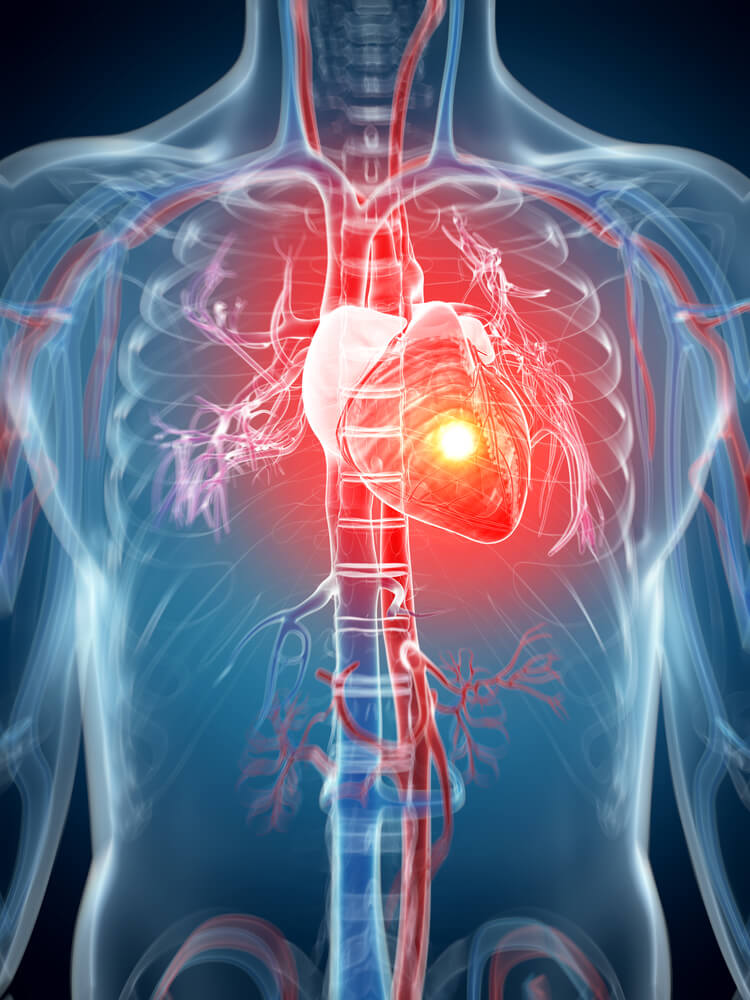Heart Attack and Stem Cells
Myocardial infarction, more commonly known as a heart attack, commonly occurs due to coronary heart disease and the arteries in the heart becoming blocked up with plaques of cholesterol. This blockage restricts blood flow and oxygen to the heart resulting in serious damage to the heart tissue; if not treated urgently myocardial infarction can be fatal.[1]
There are approximately 124,000 heart attacks in the UK each year and approximately 900,000 people under the age of 75 living in the UK who have suffered a heart attack.[2]
Hospitalisation, GP visits and rehabilitation of those who suffered a heart attack in 2009/10 cost the UK £372,809,000. During the same period heart attacks accrued productivity losses in the UK of £3,079,691,000.[3]
Heart Attack Facts
- Around 62,000 men and 39,000 women in England suffer a heart attack each year[2]
- In England, around 11% of men and 15% of women who were admitted to hospital with a heart attack die within 30 days[2]
- One in three people who have a heart attack die before reaching hospital[2]
- Every six minutes someone dies of a heart attack in the UK[2]
- An estimated 1,000,000 men and nearly 500,000 women living in the UK who have had a heart attack[2]
- Every 7 minutes someone in the UK will have a heart attack[4]
- 20 million people survive heart attacks every year[5]
Heart Attack and Stem Cells
One major flaw of the human body is the inability of the heart to naturally repair cardiac muscle which has been lost, leaving millions vulnerable to heart failure around the world.[6]
However, researchers believe stem cells may have the ability to repair the damage caused by heart attacks. While the stem cells acquired from an aging body may have limited benefit, cord blood stem cells offer much greater promise.
A study by the University of Bristol found that heart muscle-like cells developed from human umbilical cord blood derived stem cells could help repair the cells in heart muscle which becomes damaged because of a heart attack.
Professor Ascione, who led the study, said: “We believe our study represents a significant advancement and overcomes the technical hurdle of deriving cardiac muscle-type cells from human cord blood. The method we have found has the attributes of simplicity and consistency. This will permit more robust manipulation of these cells towards better cell homing and cardiac repair in patients with myocardial infarction.
“Our research suggests that in the future stem cells derived from cord blood bank facilities might be used for repair after a heart attack”.[5]
Heart Attack and Stem Cells in the headlines
References
- http://www.nhs.uk/conditions/heart-attack/Pages/Introduction.aspx
- http://www.hriuk.org/about-heart-disease/facts-about-heart-disease
- http://www.crai.co.uk/sites/default/files/publications/Burden-of-Acute-Coronary-Syndromes-in-the-UK.pdf
- http://heartuk.org.uk/press/press-kit/key-facts-figures
- www.sciencedaily.com/releases/2011/10/111013103647.htm
- http://www.ncbi.nlm.nih.gov/pmc/articles/PMC3586268/
- Circulation, 126(5), 551–568. https://doi.org/10.1161/CIRCULATIONAHA.111.086074
- Circulation research, 121(10), 1192–1204. https://doi.org/10.1161/CIRCRESAHA.117.310712
- Circulation research, 123(2), 266–287. https://doi.org/10.1161/CIRCRESAHA.118.311217
The information contained in this article is for information purposes only and is not intended to replace the advice of a medical expert. If you have any concerns about your health we urge you to discuss them with your doctor.



